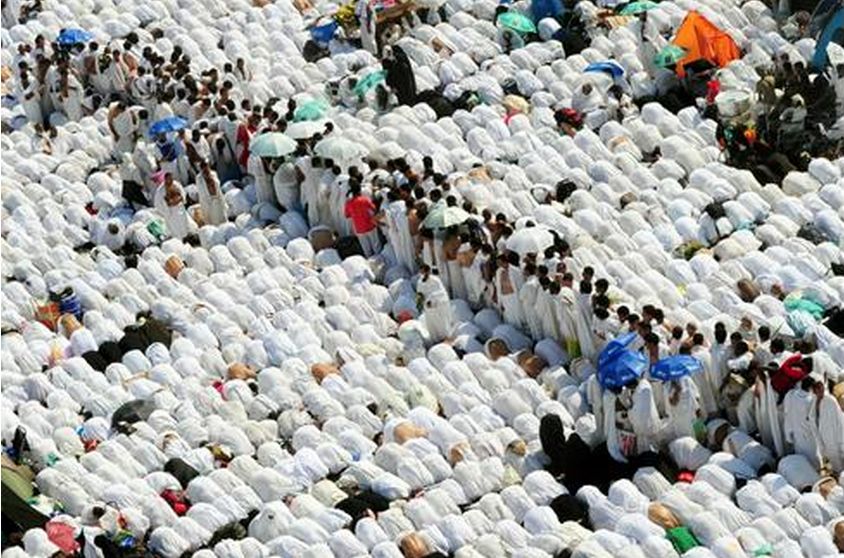Muslims on hajj in Saudi Arabia ascend holy mount
Posted 11/15/2010 10:57 PM
The white-robed pilgrims began their ascent at dawn, covering the Mountain of Mercy at Arafat in an endless sea of white as their chants of “Labyek Allah” — or “Here I am, God, answering your calling” — reverberated.
The climb is one of the cornerstones of the pilgrimage, which is required from every able-bodied Muslim at least once in his life. It is the site where Islam’s Prophet Muhammad delivered his farewell sermon, and Muslims believe on this day the doors of heaven open to answer prayers and grant forgiveness.
Saudi Arabia’s top cleric, Grand Mufti Sheik Abdul-Aziz Al Sheik, called on worshippers in a midday sermon to espouse moderation and said Islam would survive what he described as attempts to defame the faith.
“Islam will remain strong in the face of the vicious campaign that is attacking it,” he said at the Namira mosque. “Muslims, the dearest thing you have is your religion and your belief. … Be proud of your religion; don’t ever be ashamed of identifying our religion.”
As they began their climb from the tent-city in the valley, many of the pilgrims ascending Mount Arafat looked tired from a lack of sleep, having spent the entire night praying. Charities and vendors along the way handed out food and umbrellas to shield the climbers from the harsh sun.
One of the pilgrims, Wassim Ahmad, from Mumbai, India, said this was his first hajj and that he felt like a child reborn.
“Today is like judgment day,” said the 29-year-old. “We have come to pray to God. … A new child has been born.”
Alone and obviously on her first hajj, 46-year-old Egyptian Umm Sayed kept asking people for directions.
“There is nothing greater than feeling that you are going to meet God,” she said. “The whole body shivers.”
Mina, Arafat and Muzdalifa are the three stops on the pilgrims’ journey during the hajj, as worshippers trace the steps of Muhammad.
The hajj draws millions of worshippers each year, the sheer numbers a challenge in preventing stampedes at holy sites, fires in pilgrim encampments and the spread of disease.
This year Saudi authorities have taken new measures to improve crowd management, including opening a new light-rail system to transport pilgrims between the sites.
On Monday evening, the crowds head to the next stage of the pilgrimage in Muzdalifa, where they collect pebbles to use in the symbolic stoning of the devil the next day.
The first day of stoning also marks the start of the Islamic holiday of Eid al-Adha, meaning “Feast of Sacrifice,” when Muslims around the world slaughter sheep and cattle in remembrance of Abraham‘s near-sacrifice of his son. The stoning lasts three days until the end of hajj on Sunday.
Syrian Sahar Abdul-Qader, who has lived in Saudi Arabia for 13 years but had never made the pilgrimage, decided to perform the hajj at the last minute when she saw the TV coverage and was suddenly moved.
“I was watching TV yesterday and I got the chills. I told my husband, ‘I don’t want to die before going to hajj,'” Abdul-Qader said.
The couple and their two children left their home on a whim and drove for nearly 20 hours from the city of Dammam on the other side of the country.
With tears in her eyes she said, “I want to pray for my daughters to be good girls and for God to heal me.”


















